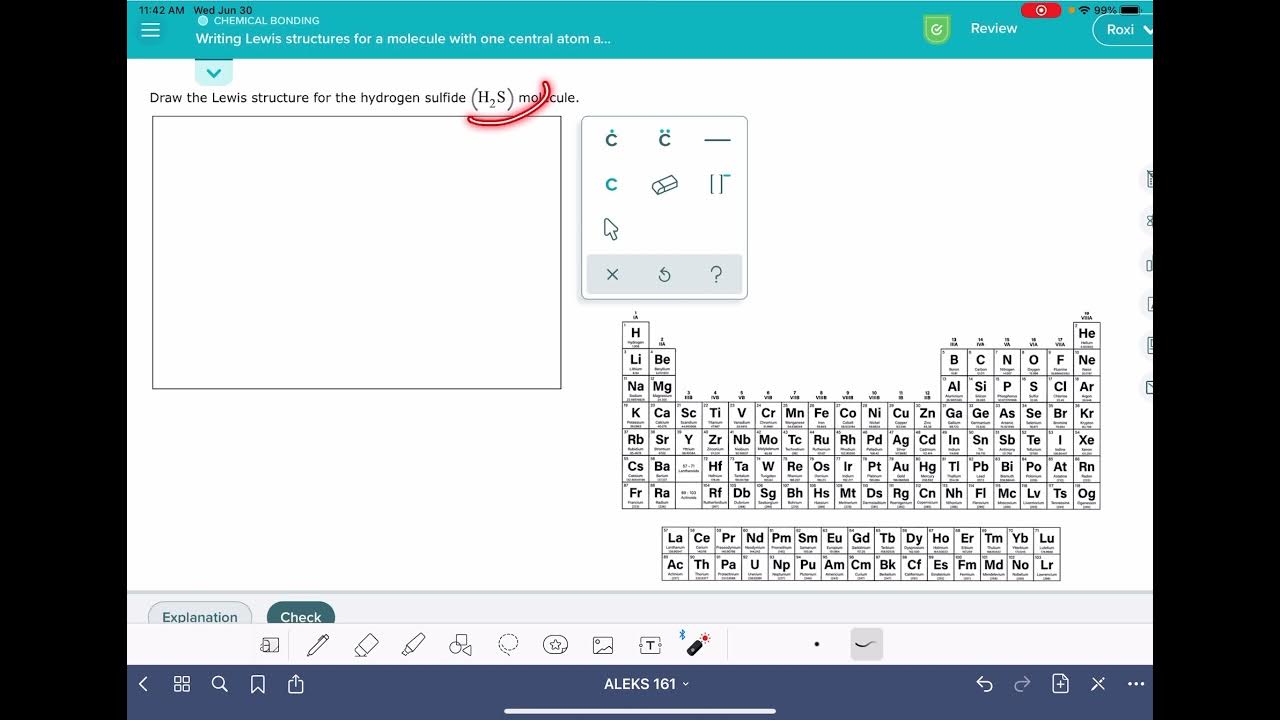Models of Hydrogen Atom Phet
Summary
TLDRIn this instructional video, the teacher introduces a Phet simulation of the hydrogen atom for an assignment. Students are guided through various questions related to atomic models, observing how light interacts with hydrogen atoms and the behavior of particles inside the atom. The teacher discusses different models, including billiard ball, plum-pudding, solar system, Bohr model, wave model, and Schrödinger’s electron cloud model. Key questions encourage students to explore the relationship between photons and atoms. The session concludes with students reflecting on how light affects atomic structure and what the current atomic model entails.
Takeaways
- 😀 The hydrogen atom Phet simulation allows students to experiment with the behavior of light passing through a box of hydrogen atoms.
- 😀 Students can manipulate the light by switching it between white and monochromatic, though it is suggested to leave it on white for most of the experiment.
- 😀 The simulation shows that light, when passing through the box of hydrogen atoms, is sometimes repelled, which is an important observation.
- 😀 The purpose of the box hiding the hydrogen atom is related to the unique properties of hydrogen, though students are encouraged to think critically about this.
- 😀 A disclaimer warns that the drawings are not to scale, highlighting the difference between atomic representations and their actual size.
- 😀 Students are asked to identify what the emitted particles represent in the simulation, with the emission being key to understanding atomic behavior.
- 😀 In the 'prediction mode', students should describe the models using protons and electrons and observe the effects of turning the light on and off for different atomic models.
- 😀 The lesson includes visual experiments for several atomic models, such as the billiard ball, plum-pudding, classic solar system, Bohr, wave, and Schrödinger's cloud models.
- 😀 Each atomic model is observed with the light both on and off to note how they react, with many models showing no activity when the light is off.
- 😀 The final questions focus on comparing the models, describing the properties of photons, and understanding how photons affect atoms. Students are encouraged to think about variables like color, size, and speed.
- 😀 The current model of the atom, which students should already be familiar with from previous lessons, is briefly reviewed at the end of the video.
Q & A
What is the main objective of the simulation in this video?
-The main objective of the simulation is to explore the behavior of hydrogen atoms when exposed to different light conditions and to understand how various atomic models describe these behaviors.
What is the purpose of the experimental control in the simulation?
-The experimental control allows users to manipulate the light being passed through the box of hydrogen atoms, such as switching between white light and monochromatic light, to observe how these changes affect the behavior of the atoms.
Why are some particles repelled inside the box of hydrogen atoms?
-The particles are repelled due to interactions with the hydrogen atoms. This likely represents the behavior of electrons in the hydrogen atom when they absorb energy, causing them to be ejected or displaced.
Why is there a box hiding the hydrogen atom in the simulation?
-The box is used to contain and isolate the hydrogen atoms, allowing users to observe how light interacts with these atoms and how electrons are affected by the incoming energy.
Why does the simulation include a disclaimer about drawings not being to scale?
-The disclaimer is included because the size of atoms is extremely small compared to the scale of the simulation. The images are not to scale to help with visualization, even though they don't represent the true size of atoms or subatomic particles.
What do the emitted objects from the 'gun' in the simulation represent?
-The emitted objects are likely photons, or particles of light, which are being fired at the hydrogen atoms in the simulation. These photons interact with the hydrogen atoms, potentially causing the emission or absorption of electrons.
What should users focus on during the 'prediction mode' of the simulation?
-Users should focus on describing the behavior of protons and electrons in the model while observing how different atomic models respond to the presence of light, both when it is turned on and off.
How does the Bohr model differ from the classic solar system model in the simulation?
-In the Bohr model, electrons are depicted as moving in fixed orbits around the nucleus, while the classic solar system model is more simplistic and doesn't show the quantum behavior of electrons, focusing only on a general orbital concept.
What does the 'wave model' in the simulation represent?
-The wave model represents the behavior of electrons as wave-like entities, reflecting the de Broglie hypothesis that electrons have both particle and wave properties. The model shows how the electron's wave motion behaves when light interacts with it.
What is the current model of the atom according to the video?
-The current model of the atom, as mentioned in the video, is the electron cloud model, which portrays electrons as existing in regions of probability around the nucleus rather than in fixed orbits.
Outlines

This section is available to paid users only. Please upgrade to access this part.
Upgrade NowMindmap

This section is available to paid users only. Please upgrade to access this part.
Upgrade NowKeywords

This section is available to paid users only. Please upgrade to access this part.
Upgrade NowHighlights

This section is available to paid users only. Please upgrade to access this part.
Upgrade NowTranscripts

This section is available to paid users only. Please upgrade to access this part.
Upgrade NowBrowse More Related Video
5.0 / 5 (0 votes)





